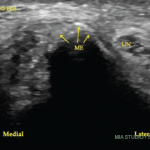“This is one of the most promising areas of development today,” he says. “The power of electricity can’t be overstated and history has shown that it is one of the most powerful tools that we have in managing disease, and we’re going to find the same thing for rheumatologic diseases.”
Dr. Staats, who is also a cofounder and chief medical officer of Basking Ridge, N.J.-based electroCore, a company focused on developing noninvasive VNS technologies to treat disease, underscores that the basic science and mechanisms of action of the vagus nerve on inflammation and other processes are now well understood, but the questions going forward will be whether VNS is effective in specific diseases, such as rheumatologic diseases.
Along with data from randomized trials, continued investigation into the anti-inflammatory mechanisms of action of VNS is providing ongoing insights that may help individualize treatment.

Dr. Olofsson
“It is very important to understand the details of the neurophysiology, molecular mechanisms and immunological effects of peripheral nerve activation in distinct contexts,” says Peder S. Olofsson, MD, PhD, principal researcher, Center for Bioelectronic Medicine, MedTechLabs, Karolinska Institute, Stockholm, and professor, Institute of Bioelectronic Medicine, Feinstein Institutes for Medical Research, Northwell Health, Manhasset, N.Y. He says an improved understanding of these processes may help us better select patients who can benefit from VNS, improve prediction of the effects and potential side effects of VNS, and improve capabilities of monitoring treatment effects and efficacy.
In one study, Dr. Olofsson et al. reported findings shedding light on how nerve signals regulate resolution of inflammation.3 They found that activation of the vagus nerve shortened the time to resolution of inflammation by significantly increasing levels of key molecules (specialized pro-resolving mediators [SPMs]) that promote processes that actively resolve inflammation.
Dr. Olofsson says this finding can be useful in multiple ways, such as measuring how a particular treatment like nerve stimulation changes the levels of SPMs. “This may help improve our understanding of how the disease develops and heals in inflammatory diseases, such as rheumatoid arthritis, and how nerves are involved in these processes,” he says.
Identifying enzymes, mediators and receptors regulated by signals in the vagus nerve can also help improve the understanding of, and the ability to predict, the therapeutic effects of stimulating the vagus nerve. “Since the details of the underlying biology may differ between patients with rheumatoid arthritis, therapeutic interventions may differ in their efficacy depending on whether they directly address the underlying problem,” says Dr. Olofsson.


